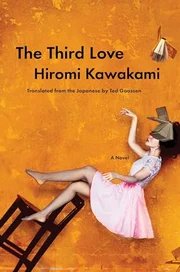An intertextual story of longing, fidelity, and the role of women in Japanese culture, the novel begins with 2-year-old Riko falling in love with Naruya. Though they eventually marry, it is an unhappy arrangement—she worships Naruya, but he is an unrepentant womanizer. With the help of former monk Mr. Takaoka (who shares the name of a ninth-century Buddhist prince), she learns a kind of magic: to enter nightly into a single, continuous dream, one that lasts for years and that she remembers when she’s awake. These dreamworlds span years of her waking life. First she is Shungetsu, from the Edo period, a child sold to work in the Yoshiwara pleasure district, where she learns to become a courtesan. Mr. Takaoka enters her dreamworld in the form of samurai Takada, and the two fall in love. When this story comes to its tragic conclusion, an even earlier narrative springs up: She is a lady-in-waiting during the Heian period. Her princess is married to Narihira, who, like Naruya, conducts countless affairs. The prose, conversational and effervescent, belies the depth of the novel’s complexity; both dream narratives take their frameworks from other texts: The Tales of Ise, partially written by the ninth-century poet Narihira, who is the hero of Riko’s dream, and the 1987 fantasy novel Takaoka’s Travels by Tatsuhiko Shibusawa. Riko can dream these stories because she’s read the sources, but her own life is also a reflection of these framing texts, and so we get them in triplicate, variations on a tale of female submission, negotiation, and freedom.
Categories
THE THIRD LOVE
